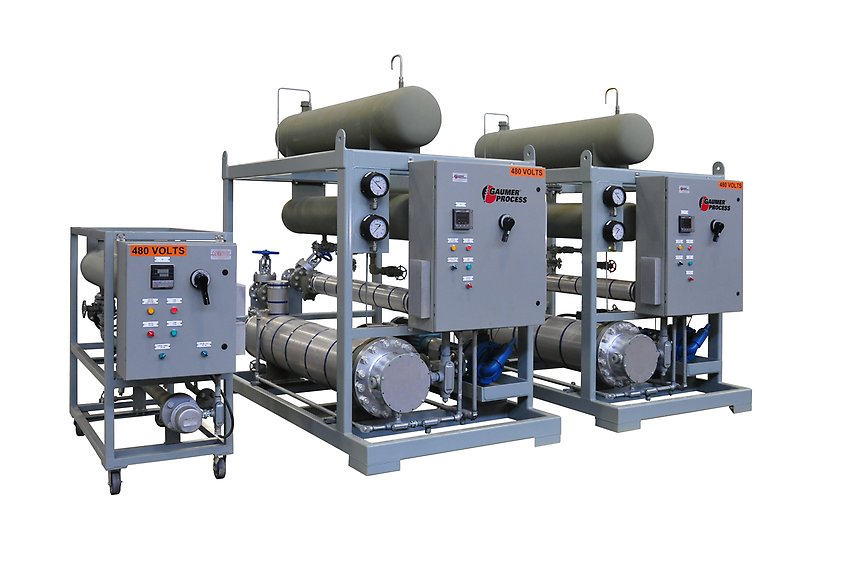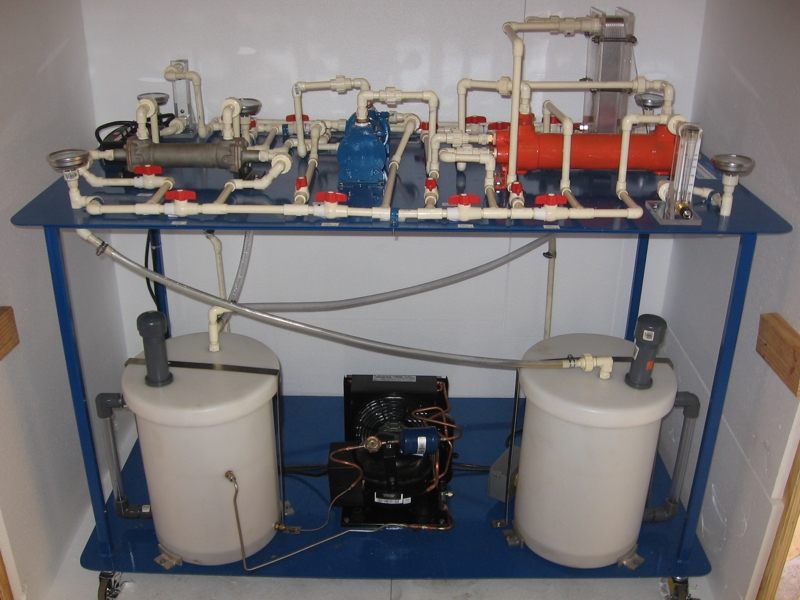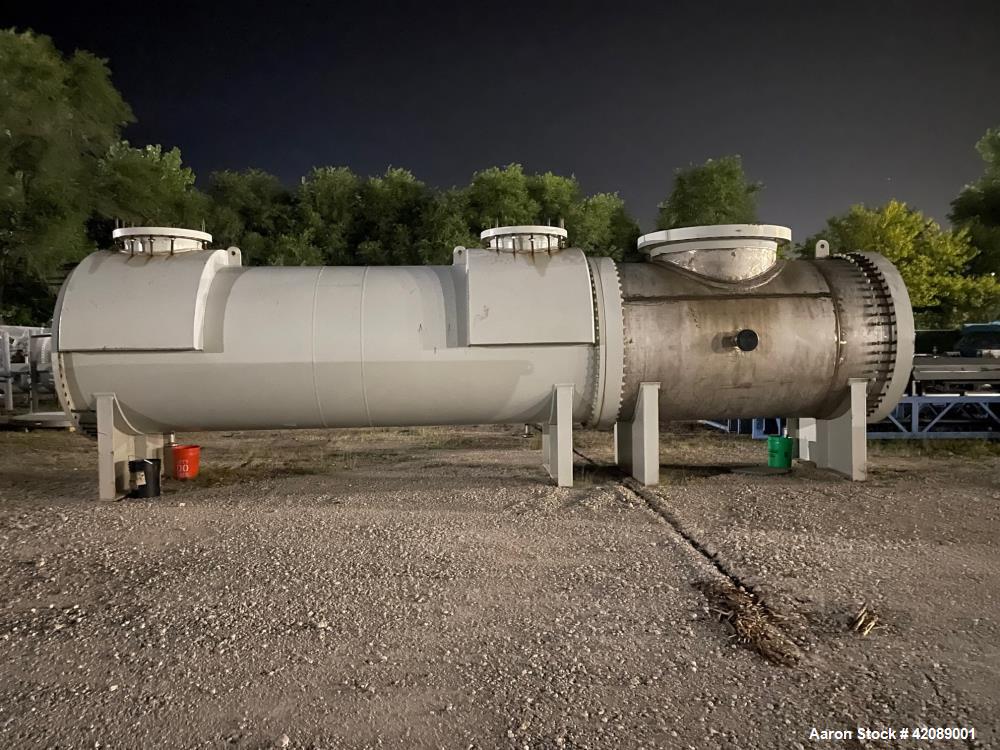Are DVS Heat Transfer Systems Built for High-Performance Electronics Cooling?
Wiki Article
Developments in Heat Transfer Solutions: What You Need to Know for Ideal Efficiency
Advancements in Heat transfer systems are changing performance across different markets. Advanced products like graphene and nanofluids promise substantial improvements in thermal conductivity. At the same time, the combination of IoT and equipment discovering offers possibilities for real-time monitoring and enhanced energy efficiency. The landscape of thermal administration is swiftly developing. Understanding these advancements is vital for attaining perfect system performance and sustainability in the future. What specific innovations are shaping this improvement?Emerging Materials for Enhanced Heat Transfer

Advanced Heat Exchanger Styles
While standard Heat exchangers have actually offered their purpose in numerous applications, advanced styles are currently emerging to meet the increasing needs for effectiveness and performance. These innovative styles, such as plate, shell-and-tube, and finned-tube Heat exchangers, integrate boosted area and enhanced circulation patterns to enhance thermal transfer rates. On top of that, portable layouts permit minimized area needs without jeopardizing performance. Advanced materials, such as compounds and corrosion-resistant alloys, additionally enhance sturdiness and performance under extreme conditions. In addition, simulation modern technologies and computational liquid characteristics are increasingly utilized to fine-tune these designs, ensuring peak Heat transfer characteristics. As markets seek to decrease energy usage and optimize output, the fostering of sophisticated Heat exchanger layouts is critical in achieving these objectives.The Function of Nanotechnology in Heat Transfer
Nanotechnology plays an essential role in improving thermal conductivity within Heat transfer systems. By manipulating products at the nanoscale, scientists have actually achieved considerable improvements in energy performance. These improvements not only optimize efficiency yet likewise add to even more lasting energy services.Enhanced Thermal Conductivity
Substantial developments in thermal conductivity have emerged through the application of nanotechnology, transforming Heat transfer systems throughout numerous markets. By integrating nanoparticles into Heat transfer fluids and products, researchers have accomplished impressive rises in thermal conductivity. These nanoparticles, such as carbon nanotubes, graphene, and metal oxides, improve the Heat transfer buildings due to their high area and one-of-a-kind thermal attributes. The resulting composites display improved efficiency in applications varying from electronic devices cooling down systems to renewable resource innovations. Moreover, the ability to customize the dimension, form, and structure of nanoparticles enables enhanced thermal management solutions. Consequently, nanotechnology continues to play a critical role in the growth of more efficient and effective Heat transfer systems, leading the way for enhanced commercial applications.
Power Performance Improvements

Assimilation of IoT in Heat Transfer Systems
The integration of IoT in Heat Home Page transfer systems presents the execution of wise sensors that enhance operational efficiency. These sensing units make it possible for real-time information tracking, enabling immediate changes and optimizations. This technical innovation has the potential to considerably enhance performance and energy administration in Heat transfer applications.Smart Sensors Application
As Heat transfer systems develop, the assimilation of clever sensing units with the Net of Things (IoT) has emerged as a transformative technique. These sensors allow real-time tracking of temperature, stress, and flow prices, improving system effectiveness and reliability. By accumulating and sending information, they promote positive maintenance, minimizing the danger of system failings. Additionally, wise sensing units add to energy cost savings by refining functional specifications based on ecological problems. Their capacity to evaluate abnormalities and fads enables educated decision-making, making certain peak efficiency of Heat transfer systems. As markets increasingly embrace this innovation, the implementation of clever sensing units stands to change exactly how Heat transfer systems are taken care of, leading the way for higher sustainability and improved performance outcomes.Real-Time Data Monitoring
How can real-time data monitoring improve the performance of Heat transfer systems? By incorporating Net of Things (IoT) modern technology, Heat transfer systems can leverage constant data collection from smart sensing units. This real-time surveillance enables immediate analysis of temperature, pressure, and circulation prices, allowing drivers to identify inadequacies immediately. As a result, modifications can be made to maximize performance, minimize energy usage, and expand devices life expectancy. Additionally, predictive upkeep can be implemented, minimizing unforeseen downtime check out this site and expensive repair services. The capability to picture efficiency metrics via control panels improves decision-making, fostering an aggressive strategy to system management. Eventually, real-time information checking not just improves functional effectiveness but additionally adds to sustainability goals within industrial processes.Power Effectiveness and Sustainability Trends
Power effectiveness and sustainability patterns are reshaping the landscape of Heat transfer systems, driving technology and compliance throughout various markets. Organizations are significantly focusing on energy-efficient styles to lower operational expenses and lessen environmental influences. The assimilation of eco-friendly power sources is ending up being extra widespread, making it possible for Heat transfer systems to run sustainably while satisfying regulative demands. Additionally, advancements in technologies and products promote reduced power consumption and boost general efficiency. Lifecycle analyses are additionally getting traction, allowing firms to examine the environmental effect of Heat transfer systems from manufacturing to disposal. This emphasis on sustainability not just sustains business responsibility however also positions organizations competitively in a market where consumers increasingly favor environmentally friendly remedies. Power efficiency and sustainability stay important considerations for future developments in Heat transfer modern technology.Technologies in Thermal Management Solutions
While the need for effective Heat transfer proceeds to climb, technologies in thermal administration services are emerging to attend to both efficiency and sustainability difficulties. Advanced materials, such as phase modification products and nanofluids, are being developed to improve Heat transfer efficiency - DVS Heat Transfer Systems. These products improve thermal conductivity and enable better temperature level guideline in numerous applications. In addition, innovations like active thermal control systems are obtaining traction, enabling real-time modifications to manage Heat circulation efficiently. These systems add to energy savings and lower the environmental impact of thermal processes. Moreover, the integration of IoT in thermal management facilitates surveillance and predictive upkeep, making certain enhanced efficiency and longevity of Heat transfer systems. In general, these advancements stand for considerable strides toward even more lasting thermal management methodsFuture Directions in Heat Transfer Modern Technology
Emerging improvements in thermal administration options signify a promising future for Heat transfer innovation. Researchers are significantly concentrating on establishing products with exceptional thermal conductivity and boosted power effectiveness. Technologies such as nanofluids, which include suspended nanoparticles, use significant improvements in Heat transfer efficiency. Additionally, the integration of smart materials that adjust to varying temperature level problems is gaining traction, permitting more effective and responsive systems. The rise of additive production strategies is additionally allowing the design of intricate Heat exchanger geometries that enhance fluid circulation. Moreover, the execution of device understanding algorithms is prepared for to transform the optimization of Heat transfer systems, facilitating anticipating upkeep and performance enhancement. Collectively, these innovations are poised to transform the landscape of Heat transfer innovations in various sectors.
Regularly Asked Inquiries

Exactly how Do I Select the Right Heat Transfer System for My Application?
Selecting the appropriate Heat transfer system entails assessing application needs, consisting of temperature level arrays, liquid properties, and effectiveness requirements. Evaluating system types, maintenance considerations, and cost-effectiveness additionally plays an essential duty in making an informed choice.What Are the Upkeep Needs for Advanced Heat Exchangers?
Upkeep demands for innovative Heat exchangers commonly consist of regular inspections, monitoring for leaks, cleaning of surface areas, and ensuring ideal circulation rates. Complying with manufacturer guidelines warranties effective operation and prolongs the tools's life-span.
Just How Do Environmental Elements Affect Heat Transfer Effectiveness?
Ecological variables significantly influence Heat transfer effectiveness. Variants in moisture, airflow, and temperature impact thermal conductivity and convective Heat transfer, ultimately impacting system efficiency and requiring consideration throughout the layout and operation of Heat transfer systems.What Safety And Security Requirements Apply to Heat Transfer Equipments?
Security criteria for Heat transfer systems normally include standards from organizations such as ASME and ASTM. DVS Heat Transfer Systems. These criteria address products, design, and functional methods to ensure integrity, effectiveness, and security versus dangers in various applications
Just How Can I Troubleshoot Typical Heat Transfer System Issues?
Troubleshooting common Heat transfer system concerns includes looking for leaks, guaranteeing proper fluid circulation, examining insulation stability, and validating temperature level differentials. Recognizing these factors can help keep system efficiency and avoid more difficulties.Nanotechnology plays a crucial function in boosting thermal conductivity within Heat transfer systems. Substantial developments in thermal conductivity have emerged with the application of nanotechnology, revolutionizing Heat transfer systems throughout numerous markets. Advancements in thermal conductivity with nanotechnology have paved the way for amazing enhancements in power efficiency within Heat transfer click systems. Power effectiveness and sustainability patterns are improving the landscape of Heat transfer systems, driving technology and compliance across various industries. The combination of IoT in thermal administration helps with tracking and anticipating upkeep, making sure enhanced performance and long life of Heat transfer systems.
Report this wiki page